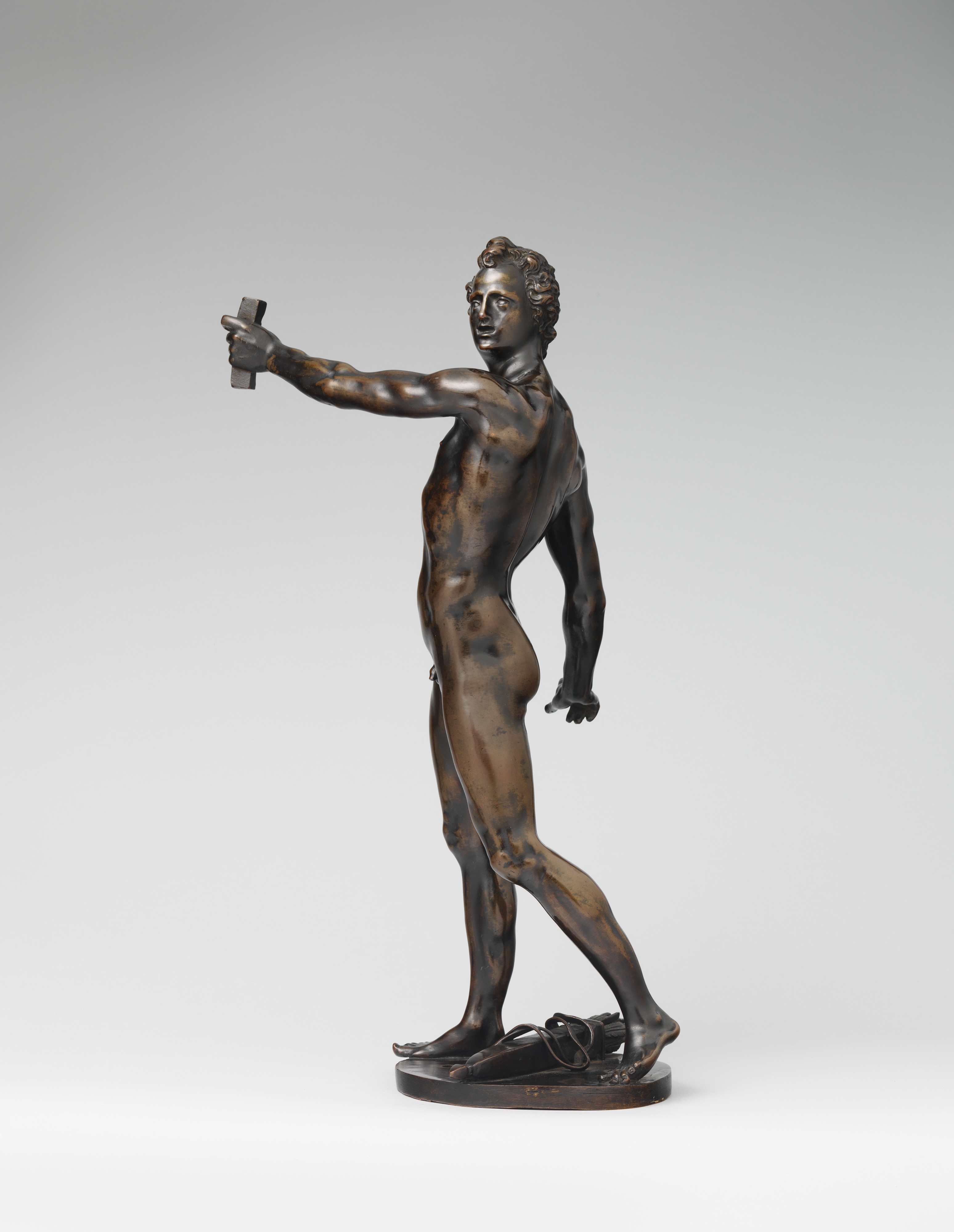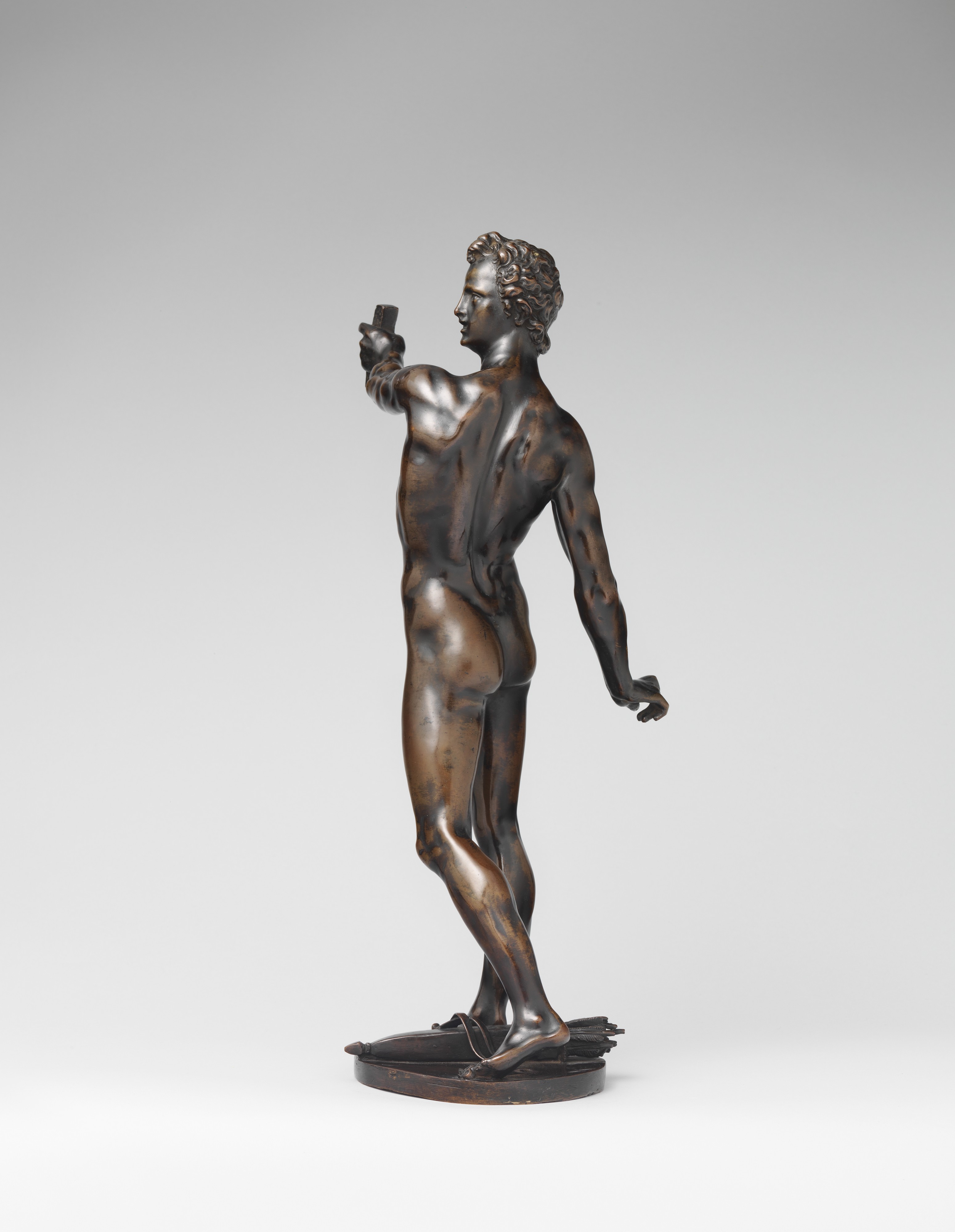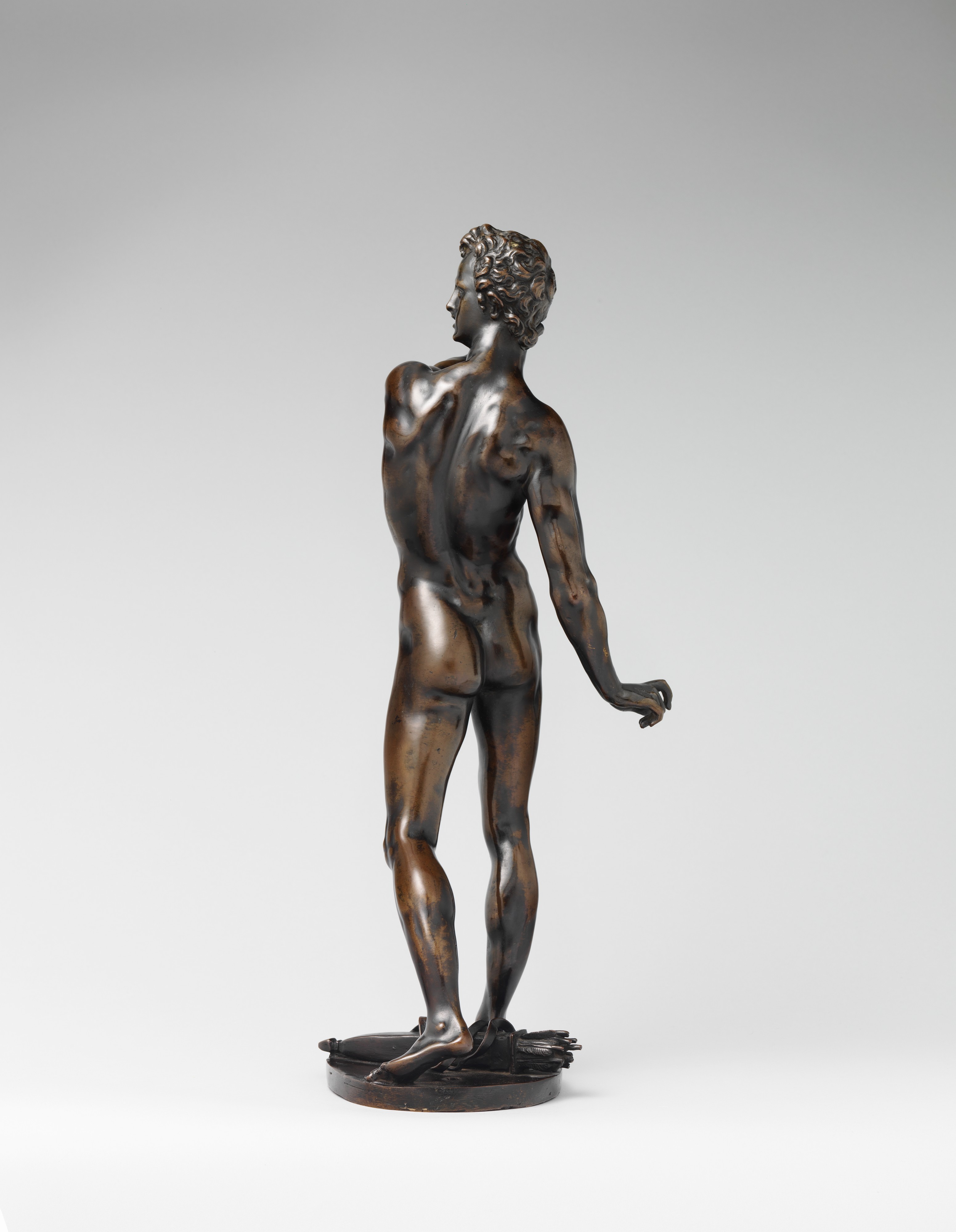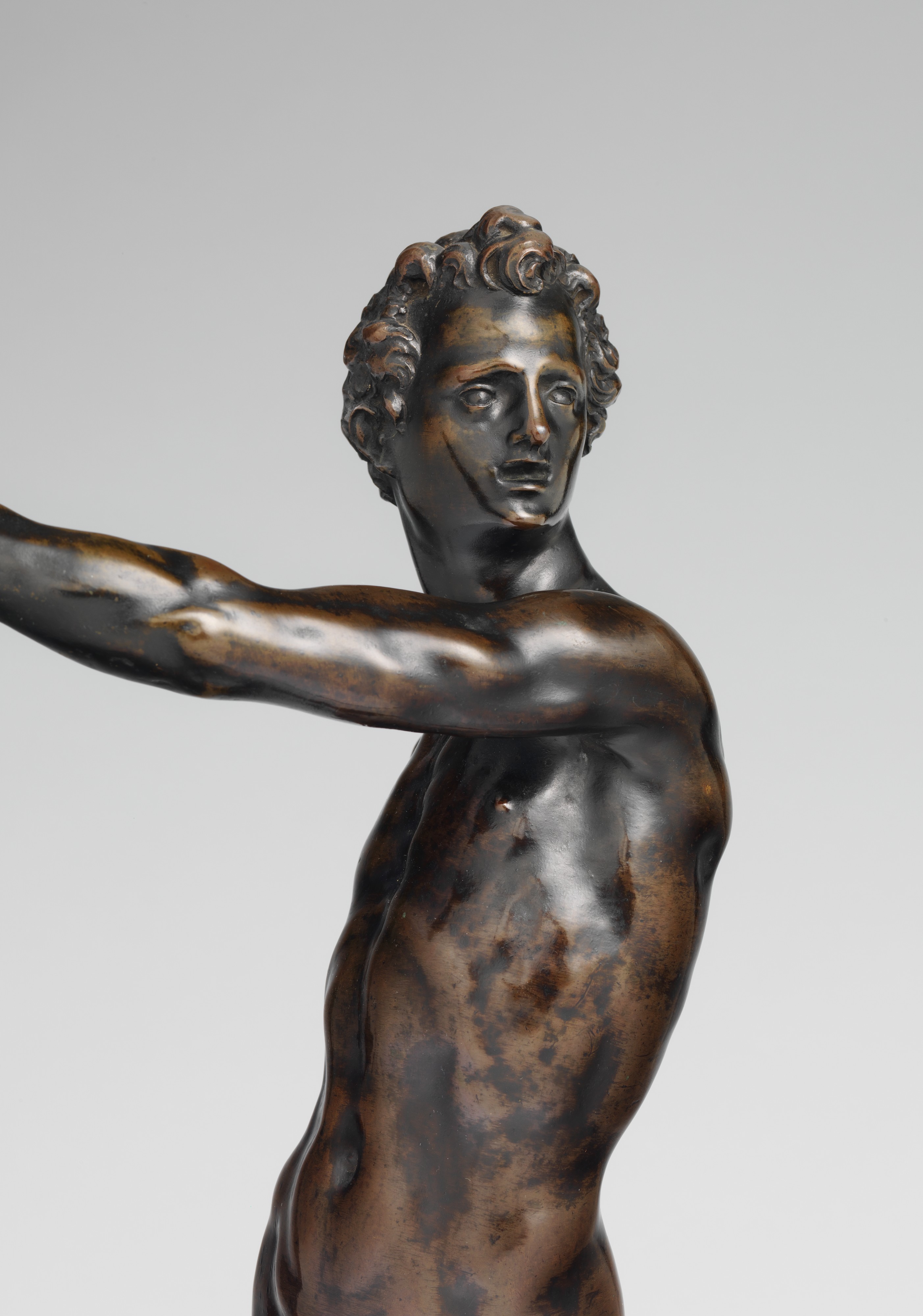Apollo
Adriaen de Vries Netherlandish
The critical fortunes of this bronze reflect scholarly advances in the field of Mannerist sculpture since the 1920s. While in the Blumenthal collection, it was attributed to the most famous maker of bronze statuettes during the second half of the sixteenth century, Giambologna;[1] however, it formally entered the Museum in 1966 as a work by the latter’s rival Benvenuto Cellini.[2] After exhibitions on Giambologna and publications on Cellini had helped to clarify their oeuvres, Olga Raggio proposed ascribing the piece to Adriaen de Vries, basing her attribution on an inscription at the bottom of an engraving of our Apollo by Jan Muller, which identified De Vries as the design’s inventor.[3] In 1998 – 2000, the first major exhibition ever devoted to De Vries confirmed his authorship of the Museum’s Apollo.[4]
This sculptor, born in The Hague, was international in his formation and practice. While his apprenticeship in Holland is uncertain, documents confirm that he worked from 1581 to 1586 with Giambologna in Florence, where a number of Netherlandish sculptors had already joined the great master from Douai.[5] Subsequently De Vries worked with others or as his own man first in Milan, and then in Turin, Augsburg, and Prague. Both the source and the style of Apollo reflect his Italian experiences. Inevitably the most famous antique representation of the god, the Apollo Belvedere — which was accessible for study when De Vries visited Rome in 1595 — resonates in the frontal view of our Apollo as he strides forward on his right foot, the other trailing behind, and twists his head sharply to his left.[6] But the spiraling composition, resolved into clearly defined views from sides and back, moves well beyond its ancient inspiration to the multiple viewpoints favored by the front-runner of Mannerist style, Giambologna. Apollo’s left arm is extended forcefully forward; only a fragment of the bow he holds remains to suggest his activity. Unlike the ancient Apollo, he does not gaze where his weapon points. Interestingly, Jan Muller provided an explanation for this: in his engraving, the god’s glance is directed at a python on cliffs above; he seems to have just sighted his prey and will immediately turn to shoot.
But creating an elegant pose concerned De Vries more than depicting realistic action. The back view of Apollo reflects the care with which the sculptor worked out the contrapposto. There are similarities with his statuette of a faun (Staatliche Kunstsammlungen, Dresden) in the curvature of the spine and twists of the body, though the Apollo moves less gracefully than the Faun. Both of these bronzes were likely made in the 1590s, either in Augsburg or in Prague. On the evidence of Muller’s print, datable to about 1598, and because we know that the sculptor and the engraver collaborated, probably between 1594 and 1598, it is probably correct to say that the Apollo was executed in Augsburg during those years.[7] A drawing of Apollo in Gdan´sk has been identified as preparatory to the statuette.[8] The drawn figure’s more pronounced sway and stocky body, as well as the positioning of the right arm and pentimenti in the penciled right leg under the penned one, suggest that this is an initial concept rather than a copy after the statuette.
In addition to large fountain groups in Augsburg — Mercury (1599) and Hercules (1597 – 1602) — and busts executed in Prague of his principal patrons, including Rudolf II (1603, Kunsthistorisches Museum, Vienna), De Vries made several small bronzes of classical subjects during his early period. Few survive — the Faun and a Nymph (Staatliche Kunstsammlungen, Grünes Gewölbe, Dresden) are thought to be after his model rather than directly finished by him — so the Apollo is a rare example of this artist’s production of statuettes on this scale before 1600.
[Ian Wardropper. European Sculpture, 1400–1900, In the Metropolitan Museum of Art. New York, 2011, no. 32, pp. 101–103.]
Footnotes:
1. Rubinstein-Bloch 1926 – 30, vol. 2, pl. lv.
2. Phillips 1966, pp. 94, 95.
3. Giambologna 1978; Pope-Hennessy 1985. Raggio’s attribution is in a memorandum in the curatorial files of the Department of European Sculpture and Decorative Arts, Metropolitan Museum.
4. See De Vries 1998, pp. 115 – 17, no. 5 (entry by Frits Scholten), pp. 248 – 49, no. 45 (entry by Thomas DaCosta Kaufmann).
5. Scholten 1998a, pp. 14 – 15.
6. Scholten in De Vries 1998, p. 115.
7. Filedt Kok 1995, pp. 21 – 22, no. b.81; DaCosta Kaufmann in De Vries 1998, p. 248.
8. See Lars Olof Larrson in Rudolf II and Prague 1997, p. 414, no. i.120; DaCosta Kaufmann in De Vries 1998, pp. 248 – 49, no. 45.
Due to rights restrictions, this image cannot be enlarged, viewed at full screen, or downloaded.
This artwork is meant to be viewed from right to left. Scroll left to view more.











